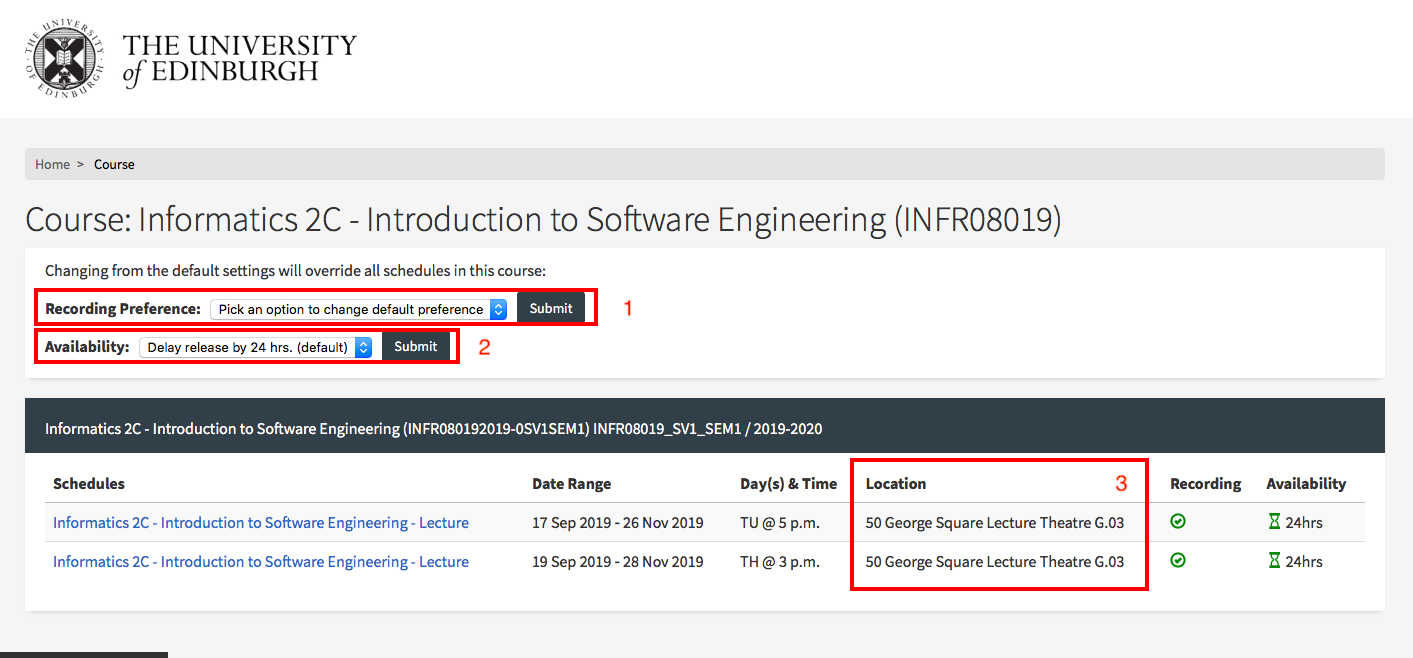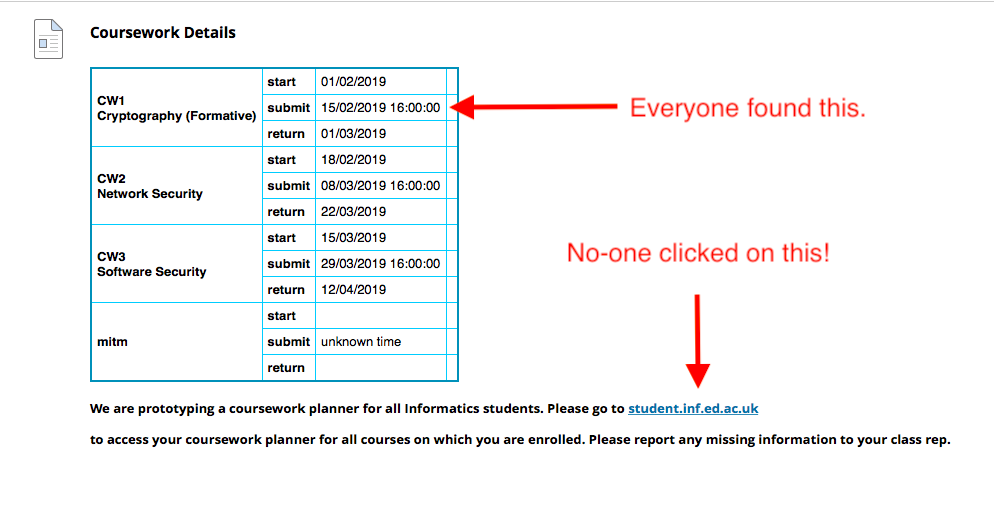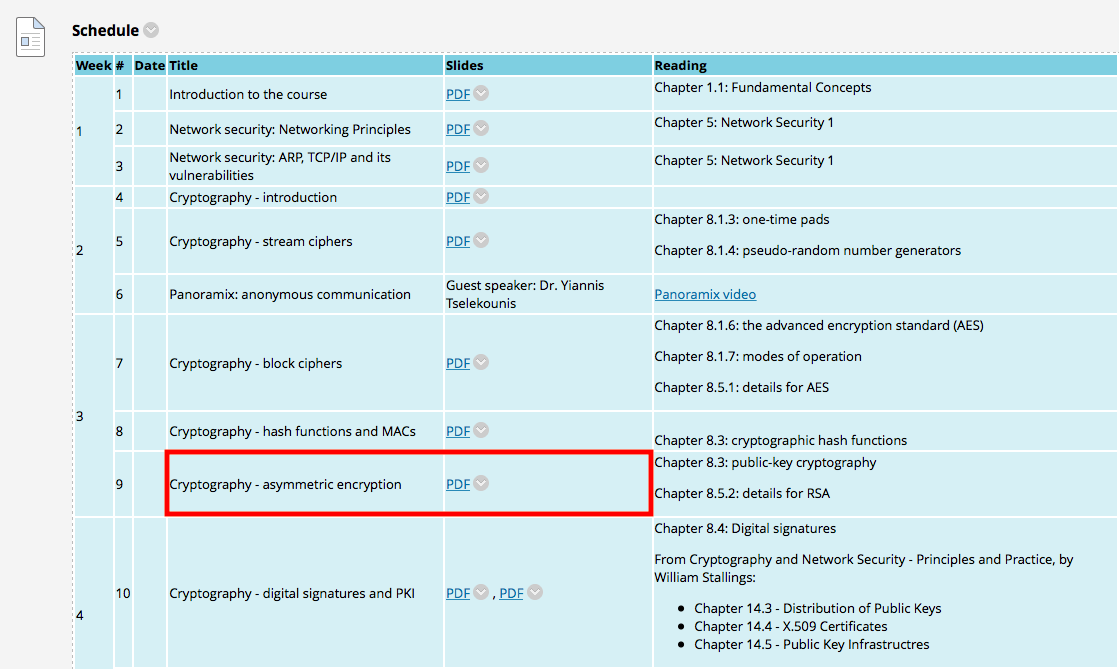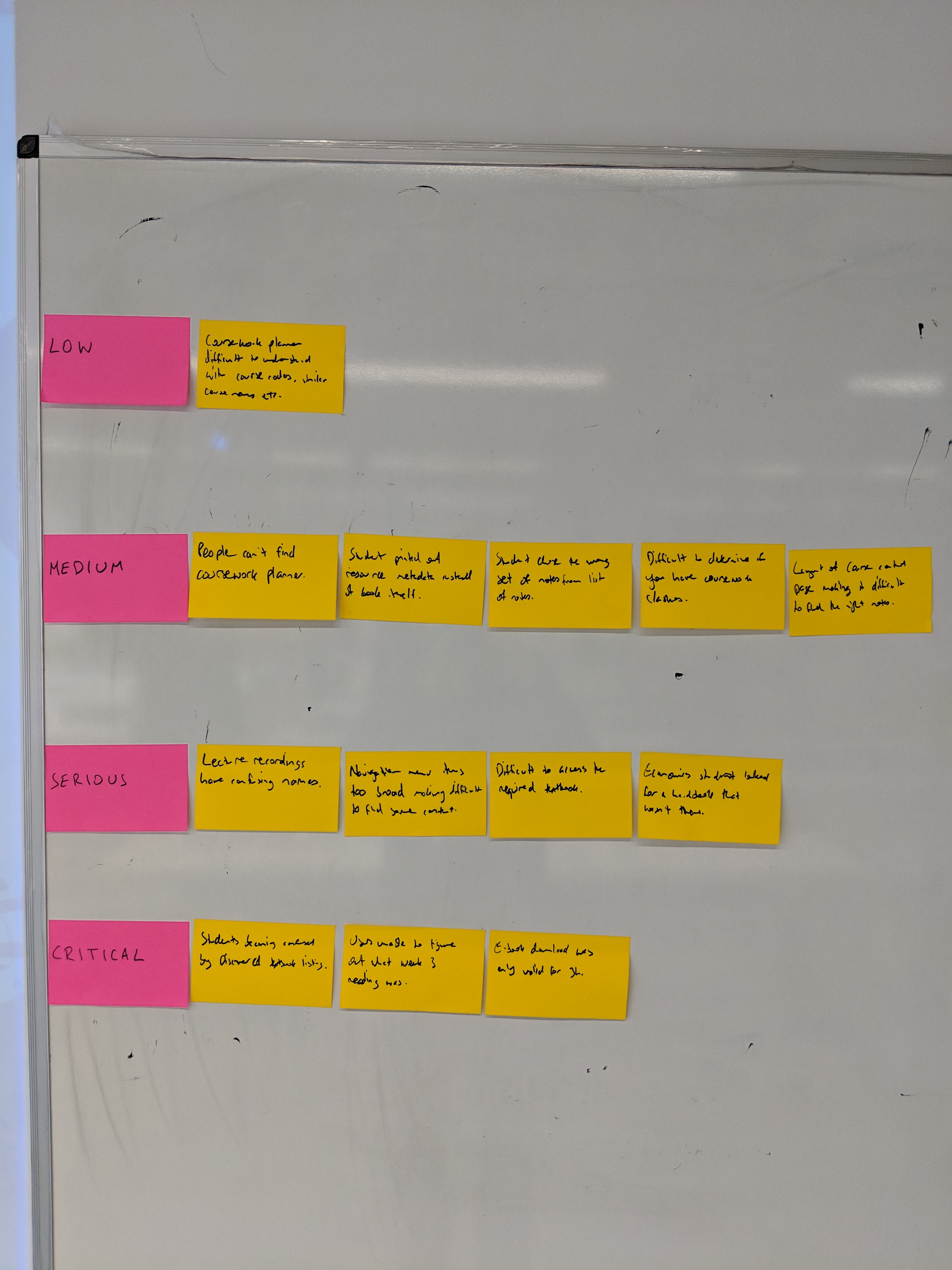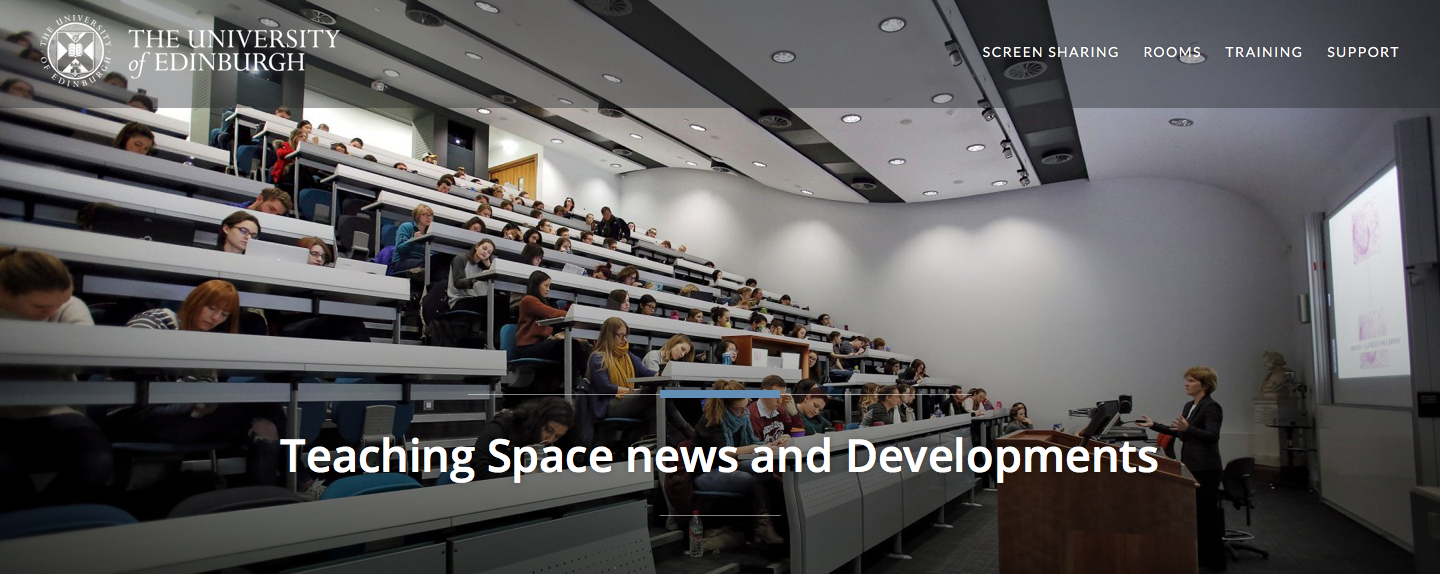Note: The template changed completely with the move to Learn Ultra for A/Y 2023-24 and the migration of Informatics courses to OpenCourse.
What is a Learn template?
Templates can be assigned to Learn course pages. They can currently only be applied at School level and include the content, design and settings defined in the template (e.g. course menu, colour, banners, rubrics etc).
Why develop a Learn template for Informatics?
When I took up post as Learning Technologist for Informatics in February 2018, students across Informatics had access to Learn via courses shared with Mathematics (and other subject areas). Learn adoption across Informatics however was minimal. Of the 105 courses listed on the course index page, 70 had a course instance on Learn. However, of these 70 course instances, only eight were the primary site for course content (and of these, four had online learners). The other 62 course instances on Learn were primarily used as a function for students to access recordings of lectures.
There were a few instances of course organisers making use of some other Learn tools (the Leganto Resource List and the Announcements tool) and several used some form of assessment tool in Learn (Turnitin or the Learn quiz tool). However, nearly all simply linked out to information hosted elsewhere (most here: http://www.inf.ed.ac.uk/teaching/courses/, some here: https://blog.inf.ed.ac.uk, some here: https://ease.groups.inf.ed.ac.uk and a couple here: http://wp.inf.ed.ac.uk). This obviously provides a disjointed experience for our students.
Efforts to improve the Learn experience were therefore not only justified but essential. Such efforts were primarily targeted towards the following outcomes:
- Improve the student experience of Learn via a more consistent design
- Improve the staff experience of Learn by offering a more customized, flexible and responsive service to meet the needs of academic and support colleagues.
It is worth mentioning that improving the student experience of Learn via a more consistent design is part of a wider University project called Learn Foundations. The Project page for Learn Foundations can be found here.
Learn template: iteration #1 (Semester 1 2018/19)
Course menu
Course information
Replaces the previous ‘landing pages’ and provides a quick, at-a-glance summary of course information. Primarily driven by scripts embedding content from Theon.
Announcements
A useful tool for sharing important course information with students, without having to use mailing lists.
Course content
This is where the bulk of the teaching content sits. A table format is frequently favoured, with links to lecture slides, lecture recordings, key readings and tutorial / lab sheets.
Replay lectures
Tool link to Media Hopper Replay, the default service for automated and ad hoc lecture recording.
Resource Lists
Includes a tool link to the centrally supported Resource List service (Leganto). Many courses are still not taking advantage of this service, and instead simply listing recommended books. Advantages of the Resource List service include: key resources become more accessible to students; students can quickly see which items are ‘Essential’ reading; improved discovery of resources.
Discussions (Piazza)
Many courses use Piazza for class discussions. Unfortunately, we can’t take advantage of the LTI link due to concerns around the security of the data.
Coursework and feedback
Includes a link (hidden to students) to a webmark form where course organisers are instructed to enter key coursework details. On submission of the form, this information is then automatically embedded on the same page. This provides a consistent experience for students when wanting to access key coursework information. The data driving this can then be used to produce customized timelines for each student, to facilitate better workload planning.
Assessment and Exams
Quick and consistently presented information relating to common assessment queries such as late submission policy, academic misconduct, marking criteria and exam information (where relevant).
Student Course Feedback
Consistently presented information on the different ways students can give feedback about their course. Also contains instructions for staff on how they can encourage and collate course feedback (hidden from students).
Help
Information (relevant to course) on how and where to seek help, eg InfPALS, Programming club etc.
Help for Staff
Hidden from students, includes links to avenues of help such as the Informatics Learning Technology Support site.
Groups
Tool link to the Groups function in Learn. This year the ITO, along with course organisers, are managing tutorial groups (and, in some cases, lab groups) via Learn. This tool link allows students to sign-up for specific groups (where appropriate) and allows them to see in which groups they are enrolled, along with access to group specific tools such as discussion boards, group email, blogs etc.
Course Management
Guest Access
All Learn courses in Informatics are enabled for Guest Access. This means anyone in the world can access the ‘home page’ of the Learn course (default=Course information page). Course organisers can then choose which content areas they want open to the world, vs restricted to students enrolled on the course. If course organisers want courses restricted to anyone with an EASE password, they can enable the course for self-enrol. If they would like their course promoted on the self-enrol panel in Learn, they should email the Informatics Learning Technology service: lt-support@inf.ed.ac.uk.
Grade Centre
The Grade Centre in the Informatics template contains one marking schema – which maps to Common Marking Scheme 1: Undergraduate Degree Assessment (except BVM&S and MBChB) and CMS 4: Postgraduate Assessment Mark.
Useful links:
Learn Foundations Projects – background information
Learn Foundations Project page


